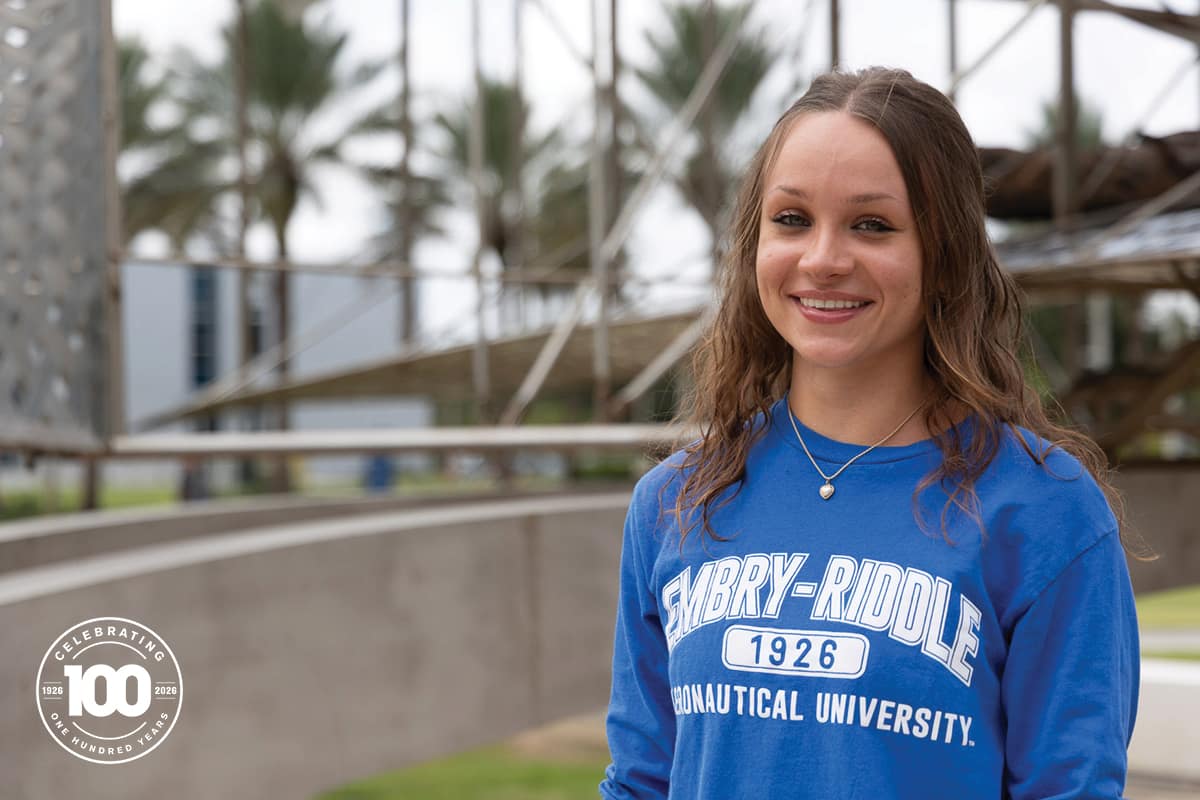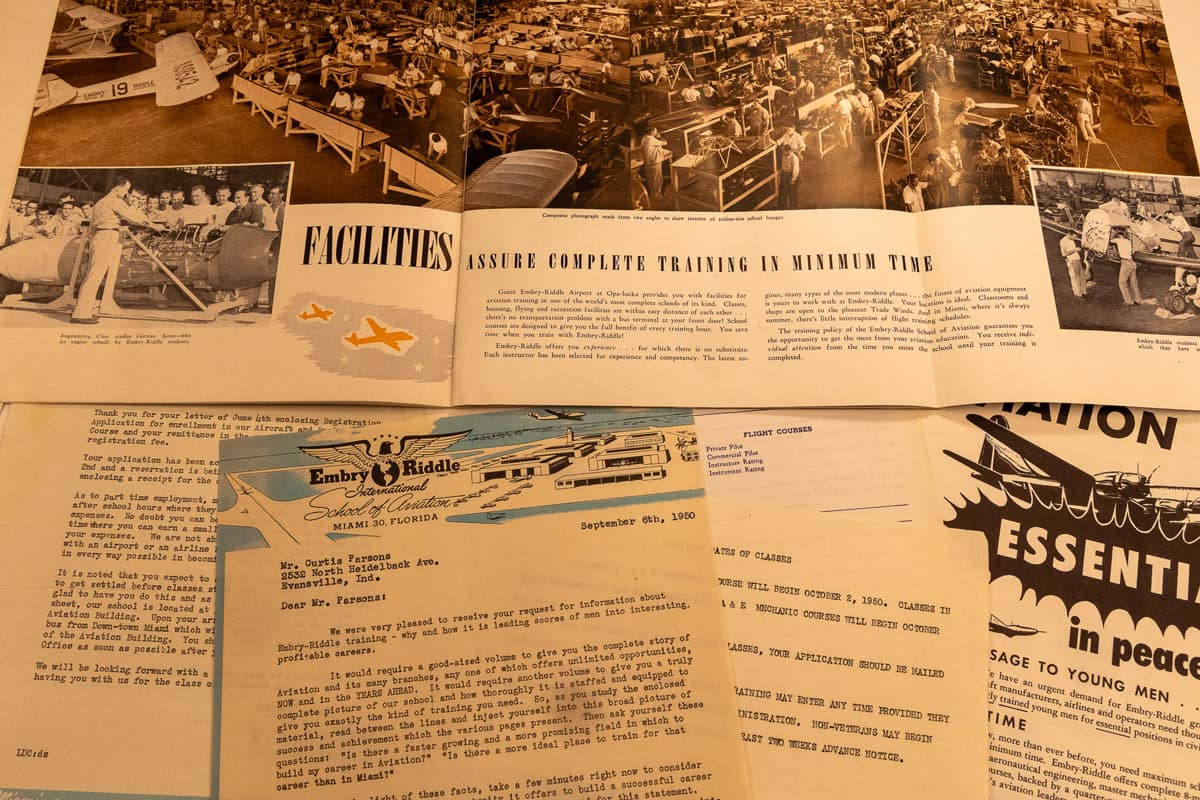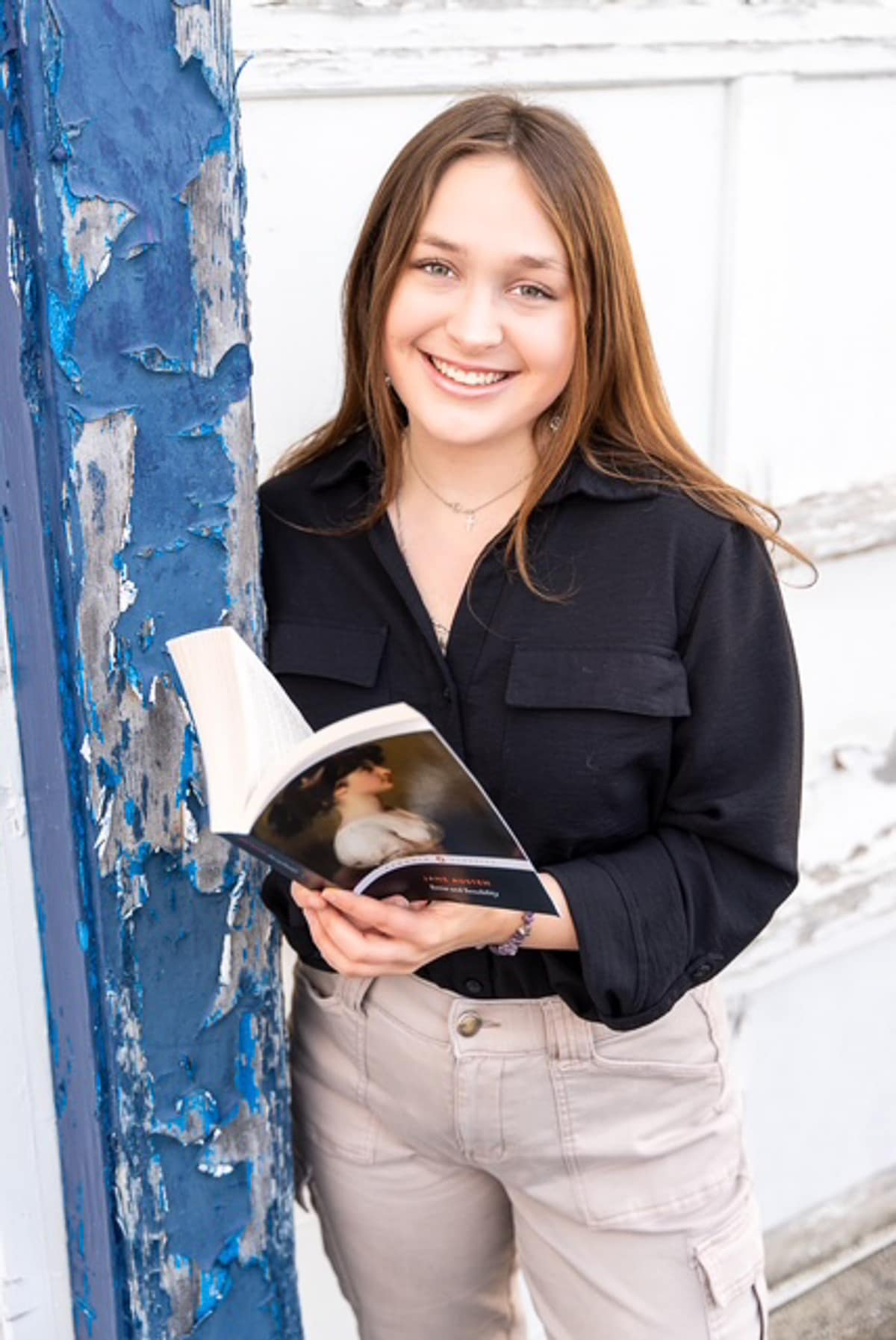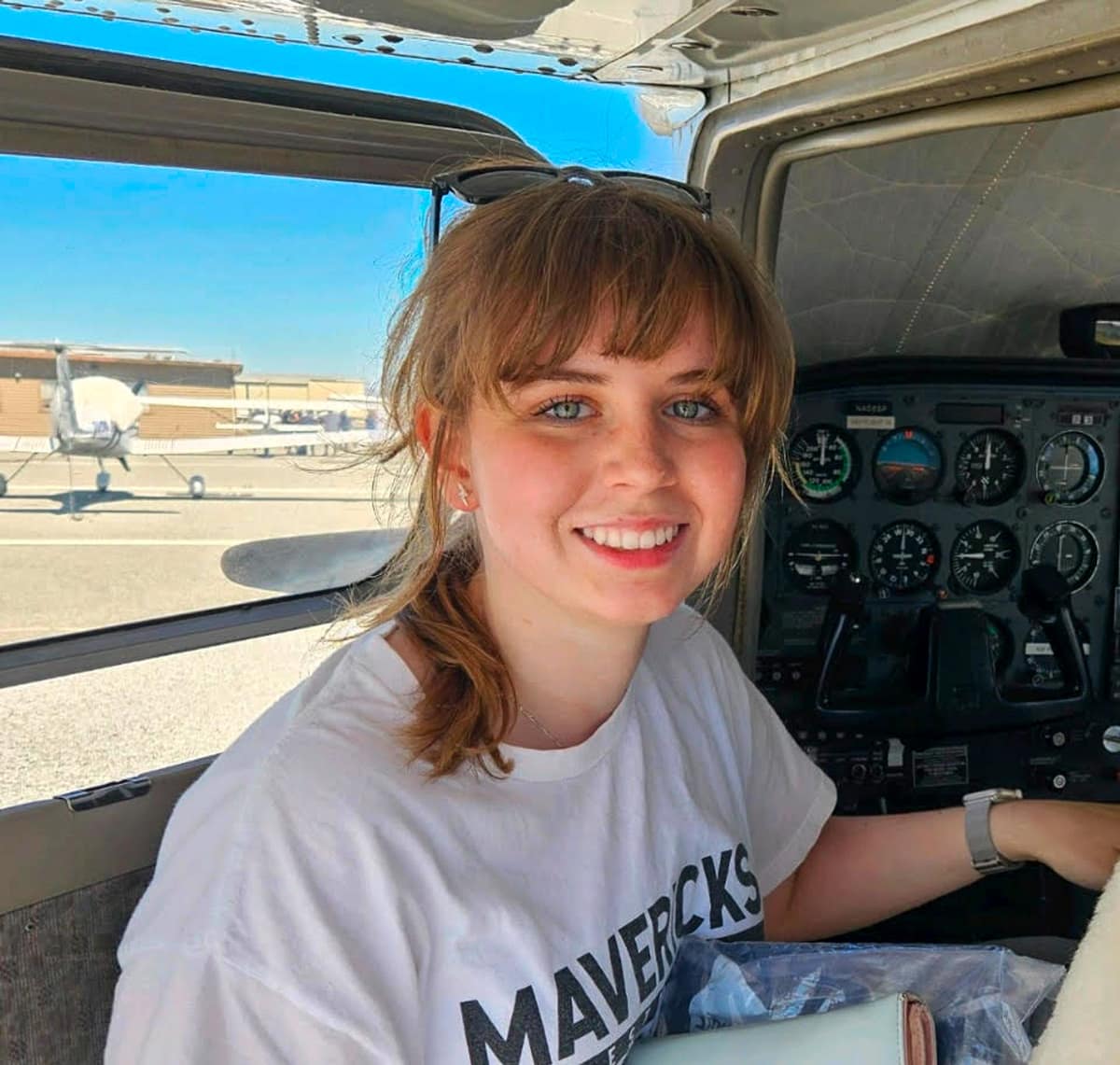From the Skies to Space, Embry-Riddle Draws Bold New Explorers

On sky-blue letterhead, an eagle and globe encircle the words Embry-Riddle International School of Aviation. The letter, dated Sept. 6, 1950, is postmarked Miami 30, Florida.

Documents from the Embry-Riddle International School of Aviation soliciting students. (Photo: Embry-Riddle/Seth Robbins)
In it, Dean of Enrollment L.D. Carlton told prospective student Curtis Parson of Evansville, Indiana, that Embry-Riddle training was leading “scores of men” into “unlimited opportunities to grow in this fastest developing of all industries.” A one-page application was enclosed.
In the 75 years since, applying to Embry-Riddle Aeronautical University has become far more demanding, and admission far more competitive. Another change: more than a quarter of Embry-Riddle’s incoming class at its residential campuses in Daytona Beach, Florida, and Prescott, Arizona, are women.
But the pioneering spirit of aviation and aerospace lives on in Embry-Riddle’s newest Eagles.
From Museum to Mars
Since she could walk, Eleanor Hoffman has visited the Museum of Flight in Seattle with her dad, a Boeing employee and self-described plane nerd. She often journeyed through its space exhibits, beginning with the work of Robert Hutchings Goddard, the father of modern rocketry, and an area dedicated to the Apollo missions.

Eleanor Hoffman is a first-year Mechanical Engineering student. (Photo: Eleanor Hoffman)“I liked looking at all the challenges that people had faced in doing something that they previously thought was impossible,” Hoffman said.
At a museum presentation, she first learned about Embry-Riddle. In high school, Hoffman joined the museum’s Washington Aerospace Scholars program, which brought her to the Prescott Campus for a summer program.
“I always knew I wanted to go to Embry-Riddle,” she said, “to get that real-world experience.”
Now a first-year Mechanical Engineering student on the robotics track, Hoffman is researching rocket nozzle materials and learning computer-aided design, or CAD.
“They are not holding back at all,” she said. “I've definitely found a place where I can become the best version of myself.”
Like past space pioneers, Hoffman hopes to help achieve what still seems impossible: living on the moon — and then on Mars.
“I would love to work at a company that is furthering human transportation and human presence in space,” she said. “That would be my dream career.”
The Future of Flight
Cassidy Blackwood first discovered her interest in flying while working at San Carlos Airport, a community airfield south of San Francisco. A high school junior, she cleaned the planes inside and out and helped with maintenance, which “usually meant just moving stuff around,” she said.
“You gotta start somewhere,” Blackwood added.
That summer, she earned her private pilot certificate through a nine-week accelerated training course for rising seniors. Even then, she wasn’t sure how to make a career of flying.

Cassidy Blackwood is a first-year Aeronautical Science student. (Photo: Cassidy Blackwood)“I got to talk to the instructors and learn where they started. There were a number of Embry-Riddle alumni there, which is how I learned about Embry-Riddle," Blackwood said.
After visiting the Prescott Campus on a preview day, she set her course to becoming a pilot.
“It was an environment where everyone around me was interested in aviation and aerospace,” said Blackwood, now a first-year Aeronautical Science student. “And there were the resources for me to succeed. That’s what really stood out for me.”
Her goal, she said, is to fly for a commercial airline. She already has one in mind: Southwest.
Blackwood is most excited for the future of aviation, she said, “everything from technological advances to better traffic management, communications and air safety.”
As a member of the Prescott Campus Women in Aviation chapter, Blackwood is already encouraging younger girls to see piloting as within their reach.
A Perfect Mix
Anna Kopec, who recently earned her private pilot certificate, stood out at her all-girls high school near Chicago for her interests in aviation, astronomy and physics.
She took part in the 2023 Higher Orbits Go For Launch! event, a national competition where students create experiments for the International Space Station. The winning project is sent into orbit.
Kopec and two teammates designed an experiment to test the removal of carbon dioxide using different types of algae or moss.
“The girls I was working with know a lot more about biology, and I provided the math and physics side,” she said.
The project was selected as a finalist, though it ultimately did not reach the space station.
Kopec said her heart is split between aviation and physics, which led her to choose Engineering Physics as her major.
“I feel like it’s the perfect mix of the two, and I’m really enjoying my EP 101 class,” she said.
Kopec also found her community at the Daytona Beach Campus.
“I knew I wanted to go to Embry-Riddle since my sophomore year,” she said. “Going to a university where everybody has the same interests as me was really important.”
As Embry-Riddle marks its centennial, the university’s mission remains clear: to prepare the next generation of aviation and aerospace leaders.
From classrooms to flight decks, from laboratories to launch pads, today’s students continue the tradition of innovation that has defined Embry-Riddle for one hundred years.
